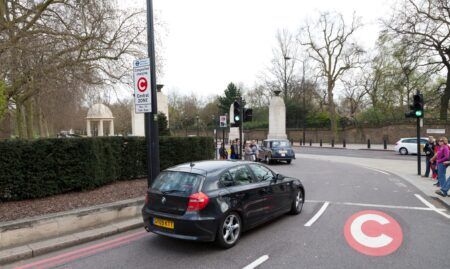Analysis of three years’ data by Queen’s University Belfast concluded that introducing a city center 20mph limit had little impact on long-term outcomes including road traffic collisions, casualties and speed, except for a reduction in traffic volume. The researchers said that planners should consider enforcement in their designs.
Traditionally the thinking among traffic engineers and the police is that 20mph-limit roads should be managed using interventions such as speed humps and traffic islands. However, such interventions are often unpopular with residents and drivers alike, as they cause damage to vehicles, and increase noise and pollution as cars brake and speed up. The surge in SUV sales in cities in recent years is often seen as a reaction to the proliferation of speed humps and cushions in urban areas, enabling drivers to ride out the bumps rather than slowing down, as intended.
Jenoptik has been behind a camera-enforced scheme on a network in Plymouth, which has bucked the trend of engineering-based interventions, following calls from people who lived there who objected to proposed speed humps on their residential streets. Instead, a series of average and spot speed camera enforcement cameras were used.
Local reports suggest these have been very popular with residents.
“I read the Queen’s University Report with interest, and it confirmed to me what I have long suspected that a formal enforcement regime is the best way to lock in the benefits of introducing 20mph limits,” says Timo Thornton, account manager at Jenoptik. “The scheme we introduced in Plymouth was not only interesting because it was a UK first, utilizing both average and spot speed cameras on the route, but also because it was demanded by residents. This puts pay to the idea that speed cameras are unpopular – they are a fair and efficient way to deliver the behavioural change you need to make our residential streets safer.”
Initial testing at the site in Plymouth showed how vital the cameras are, with more than a hundred offences per hour during the initial testing period, before enforcement began. This is therefore seen as a pilot site for the region and could lead to enforcement of other 20mph zones across the southwest.
Image courtesy of Jenoptik
|
|





